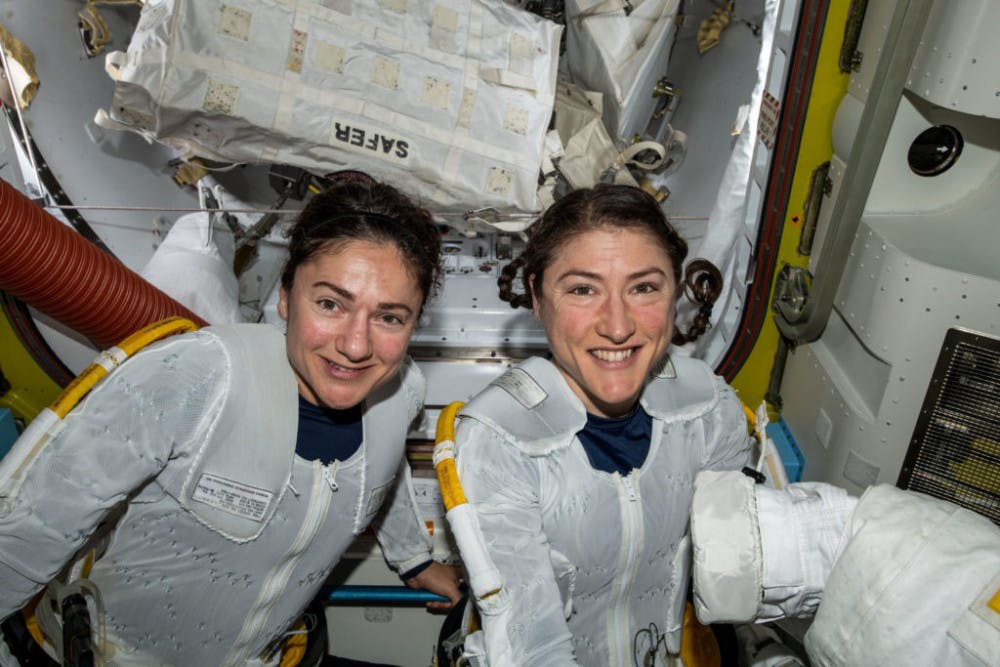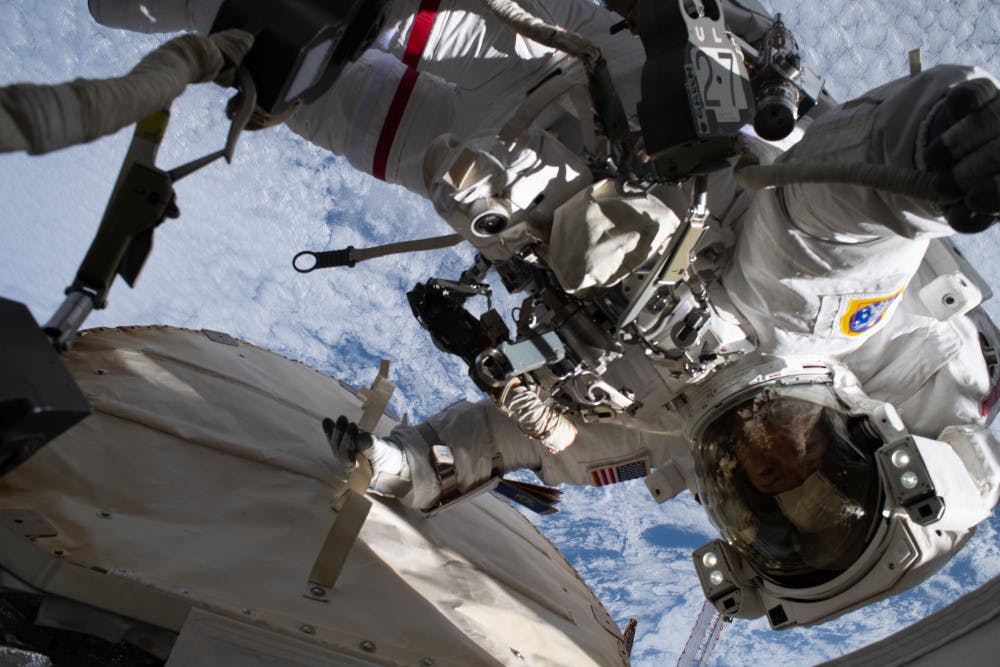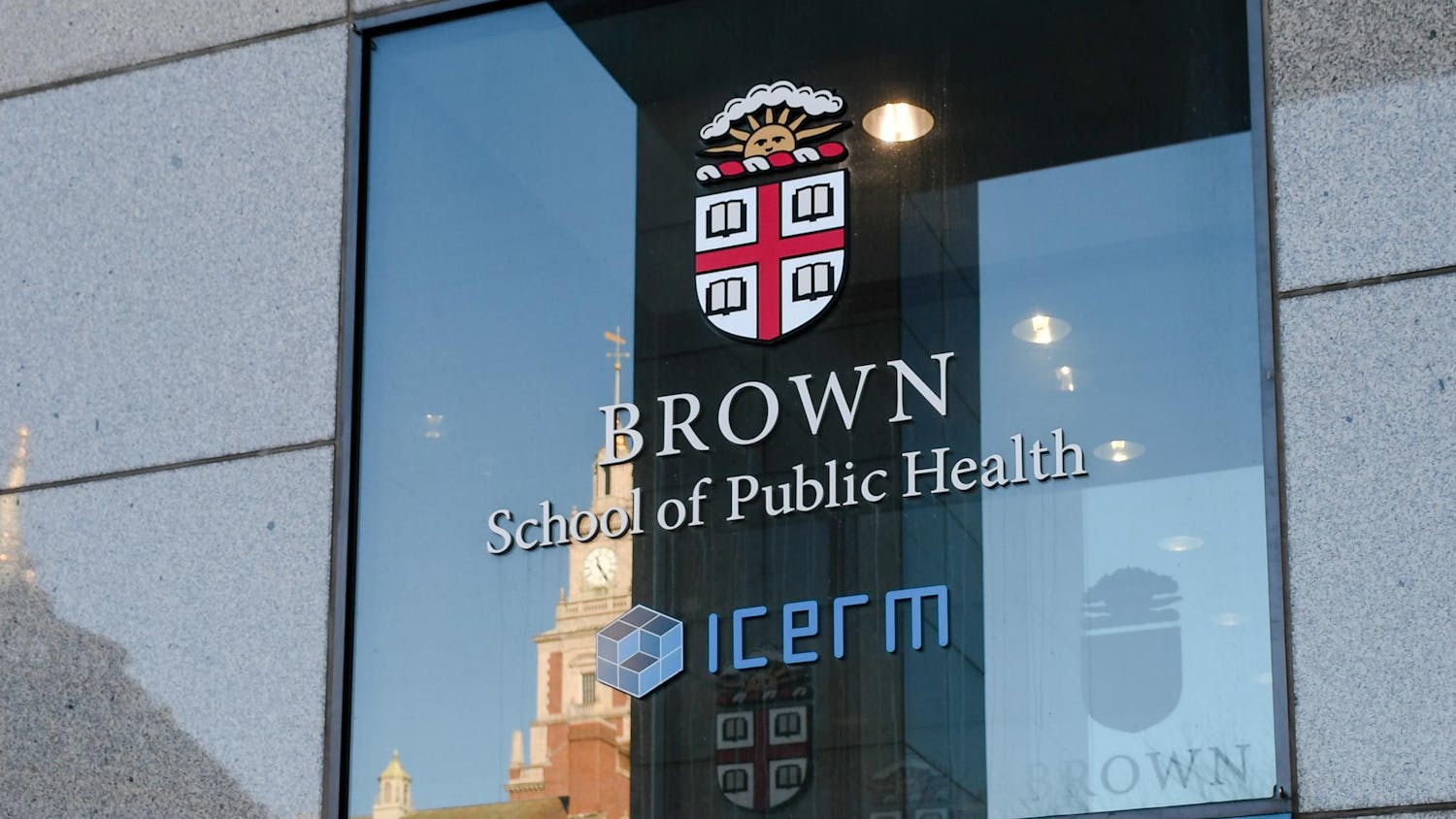When Jessica Meir ’99 was last subject to Earth’s gravitational pull almost seven months ago, life looked very different. This week she journeys home, leaving the isolation of the International Space Station behind to return to a self-quarantining planet.
Meir has been aboard the ISS since September, when her mission began following her departure from the Baikonur Cosmodrome in Kazakhstan on Sept. 25, The Herald previously reported. She is slated to return this Friday, April 17.
Meir is traveling back to Earth alongside NASA astronaut Andrew Morgan and Oleg Skripochka of the Russian Roscosmos as the ISS makes a crew change. One NASA Astronaut, Chris Cassidy, and two Roscosmos cosmonauts arrived on the space station April 9 to replace the three departing scientists.
Meir will land in Kazakhstan, where the mission began, according to NASA’s website.
Following 205 days in space, "it will be very difficult to not be able to give hugs to my family and friends, ... after being up here for seven months and being the person that I am,” Meir said in a NASA video news conference April 10.
She began the conference by thanking COVID-19 frontline workers and the people “putting their lives on the line for all of the human race.” She added that she and her fellow returning astronauts “give our profound and heartfelt thanks to all of them, especially since we are up here unable to really contribute to the fight.”
Meir has been living on the ISS — with a total working and living area of a size NASA has compared to a six-bedroom house — for more than half a year.
But, unlike the social distancing required by the COVID-19 pandemic, Meir planned for this isolation.
“I think that I will actually feel more isolated on the Earth than I did up here,” she said at the news conference. Every person aboard the ISS is not only kept busy, she added, but being in tight quarters is part of the expected routine that she intricately prepared for ahead of her journey.
Since September, Meir has completed three spacewalks, including the first all-female spacewalk Oct. 18 alongside NASA astronaut Christina Koch, who returned to Earth Feb. 6.
[caption id="" align="alignleft" width="650"]

Meir also helped run a myriad of scientific experiments aboard the ISS, including one that really started at Brown in 1999 — an experiment on cardiac activity in space co-led by Peter Lee ’94 PhD’03 MD’05. Lee, now an assistant professor of surgery at Ohio State University’s Wexner Medical Center, served as a mentor to Meir while she was at the University.
Meir met Lee when she was in her final year at Brown and he was a PhD student. In an interview with NASA, Meir said Lee was an integral part of her career’s evolution, pushing her to pursue some of the opportunities that catalyzed her journey to space. They worked in the same pathobiology lab at the University — under Professor Emeritus Herman Vandenburgh — and now, separated by the Earth’s atmosphere, they’ve completed research together again.
The experiment that Meir conducted on the ISS in March was designed to investigate the effect of microgravity in space on models of the cardiovascular system. After conducting the experiment, she told NASA: “It is so wonderful to bring things full circle from the two of us working together over 20 years ago with the shared dream of flying in space to working together on Peter’s experiment on the space station. When you reach out and give what you can to encourage someone and foster their dreams, your efforts may be exactly what it takes to turn those dreams into reality.”
[caption id="" align="aligncenter" width="650"]

An article published in the September/October 1999 issue of the Brown Alumni Magazine titled “The Vomit Comet” followed Meir, Lee and a group of other undergraduates as they traveled to Houston in August of that year to conduct the experiment on the so-called “Vomit Comet,” an aircraft that simulates zero-gravity conditions to train astronauts and conduct experiments. Twenty years later, in the September/October 2019 edition of BAM, a new headline appeared: “Space Flight: Jessica Meir ’99 takes her first giant leap to the International Space Station.”
When they weren’t conducting experiments aboard the ISS, Meir and her colleagues reflected on the unique variety of isolation they endured in space. Meir shared insight into “living happily in isolation” on her social media accounts April 2. In one video, she and Morgan demonstrate their exercise regimes aboard the ISS, reminding viewers that exercise is important for both physiological and mental health — and is possible no matter where you’re located.
Last April, when her first spaceflight was scheduled, Meir told The Herald that she had dreamed her whole life about “being out there in a spacesuit looking back on Earth.”
Since then, she has captured her view from above through photos and social media posts, including a series of twinkling nighttime shots marked by the hashtag #GoodnightFromSpace and, more recently, uplifting views labeled with #EarthStrong.
Just two months ago — before virtual communication became a mainstay of every Brunonian’s education and even before the first case of community spread of COVID-19 occurred in the U.S., Meir video-called into Salomon Center’s DeCiccio Family Auditorium. A packed audience of Brown community members cheered as she appeared on screen, The Herald previously reported.
That day, she reflected on her view of Earth, saying, “Every person you know, every place you’ve ever been, everything in the entirety of your life and in the whole evolution of the human species is down there in this one beautiful, magnificent ball.”
On Friday, Meir will return to life on that “beautiful, magnificent” terrestrial sphere as it faces an unprecedented crisis — one she has watched unfold from a 250-mile-high bird's-eye view.





